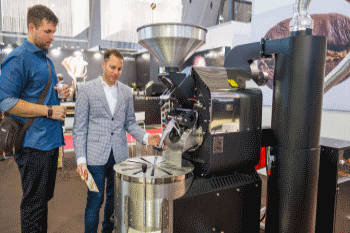China, One Of The Biggest Coffee Consumers In The World
 China is best known as a tea-drinking country, but, in the last few years, it has become one of the largest coffee consumers in the world, when speaking of the emerging countries. In particular, coffee consumption has grown among young Chinese professionals.
China is best known as a tea-drinking country, but, in the last few years, it has become one of the largest coffee consumers in the world, when speaking of the emerging countries. In particular, coffee consumption has grown among young Chinese professionals.
According to coffee market analyses reported by www.chinabgao, the growth rate of coffee consumption in China is around 20% annually, more than 2% above the global growth rate. Experts believe that the Chinese coffee consumption market could reach thousands of billions of yuan within 10 years.
The rise of the Chinese middle class and an overall better standard of living has allowed the opening of hundreds of new coffee stores all around China. According to m.sohu.com, in 2016, in China, the number of coffee houses surpassed the significant number of 100 thousand units but at the same time the number of coffee houses saw a maximum net shop closing rate of 13,5%. With a sample of the 16 major cities, the city with the best performance in terms of shops is Shanghai and the worst city is Zhengzhou.
Considering the ranking of coffee shops , according to statistics from BMI Research (London, UK) as reported by www.marketingtochina.com, in the urban cities, where the Western lifestyle is more attractive, Starbucks and Costa dominate the top positions in terms of customer flow. In particular, Starbucks, that has adapted its brand for the Chinese consumer, is the leader of the market with 2800 stores opened in 130 cities , with 600 of which only being in Shanghai, more than in New York or London, as reported by www.ft.com.
Despite the big coffee chains, the coffee boutique dominates the top position in non-chain store customer flow. In addition, this second type of coffee house offers a more friendly “environment” and “ service”.
In regards to Chinese coffee consumers, the beverage with notable major success is the LATTE, a coffee drink made with espresso and steamed milk – indeed the Chinese consumer has almost zero interest in beverages without milk and sugar. As the complementary dessert, the pancake is the undisputed queen.
According to m.sohu.com, young people of the growing middle class represent the main customer force at 75% and among them the female portion represents the biggest share of 70%. They are demanding and pay particular attention to professionalism, customised beverages and services, a ceremonial style of service, what feeling the environment can evoke and the differences between menus offered by different cafés.
Different players of offline business of all kinds are ever fighting e-commerce business competitors and are using coffee and delicious food as a weapon, in order to increase customer flow and extend the duration of in-shop customer presence.



